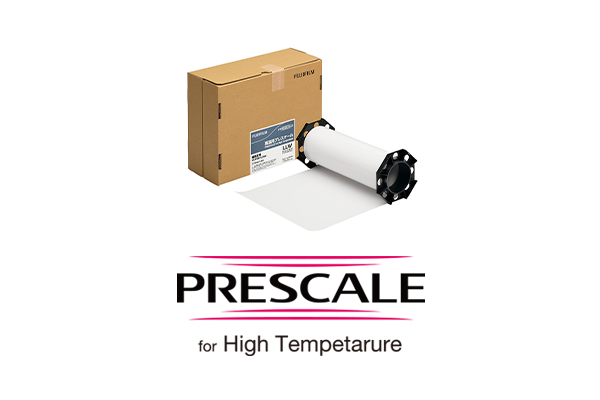The base film is coated with microcapsules containing a color-forming agent and a developer. As the heat melts the developer, the walls of the microcapsules become permeable, allowing the developer to enter the microcapsules, where it causes a chemical reaction with the color-forming agent to produce color.
There is no analysis software.
The user's manual that comes with the product package contains color samples based on experiments we have conducted. However, the color density may differ greatly depending on various factors such as heat exposure time; the material and characteristics of the object on the opposite side; surrounding environmental elements such as temperature, humidity, and wind; contact pressure; heat capacity of the heat source; and thermal conductivity. Therefore, we suggest that customers gather data on their specific measurement conditions and review the results.
Under fixed conditions, it is possible to obtain the temperature from the produced color density. However, the color density may differ greatly depending on various factors such as heat exposure time; the material and characteristics of the object on the opposite side; surrounding environmental elements such as temperature, humidity, and wind; contact pressure; heat capacity of the heat source; and thermal conductivity. Therefore, if we provide a simple chart showing the corresponding temperature-to-color density, it may lead to confusion. We suggest that customers gather data on their specific devices and measurement conditions, review the data, and find a way to obtain temperature values from the results.
Thermoscale 200C is made of PEN film.
We currently do not have a product for that temperature range. Thermoscale produces color in response to the amount of heat, so by adjusting the time, it is possible to widen the measurable temperature range.
We currently do not have a product for temperatures in those ranges. Thermoscale produces color in response to the amount of heat, so by adjusting the time, it is possible to widen the measurable temperature range.
The color-producing response is not affected by pressure. However, thermal conductivity changes when the contact conditions between the heat source and the Thermoscale surface changes due to pressure, causing the color density to change as well.
Thermoscale is designed to have the heat source come into contact with the non-glossy side (thermal sensitive color-forming layer). It will still produce color by putting the glossy side in contact with the heat source, but it may take time for heat to transfer to the thermal sensitive color-forming layer. Because of this, if the heat exposure time is short, the color density may be very different.
It depends on contact time and the measurement temperature range, but with 5 seconds of contact time and a range between 150°C and 210°C, a difference of 5°C can be visually determined.
Thermoscale is a one-time use product.

















